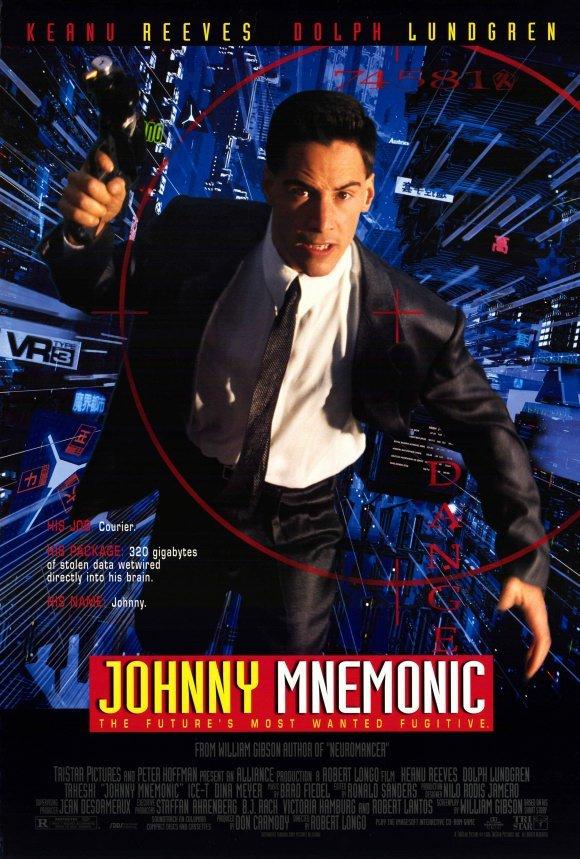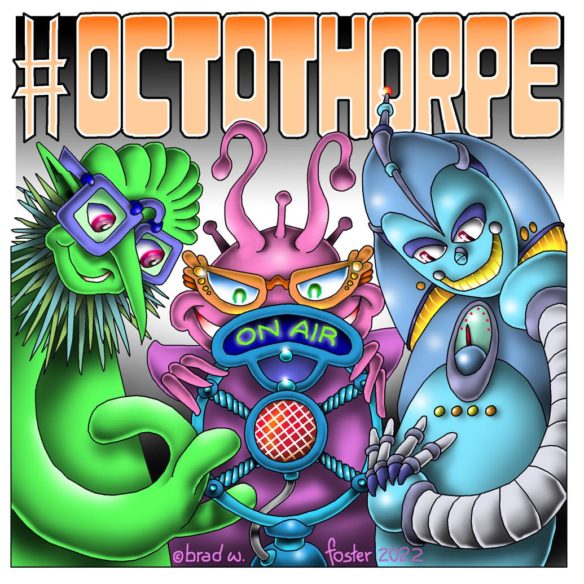(1) TICKET TO RIDE. NASA invites you to add your name and have it included on a flash drive that will fly aboard Artemis I. “Send Your Name to Space”.
Artemis I will be the first uncrewed flight test of the Space Launch System rocket and the Orion spacecraft. The flight paves the way toward landing the first woman and the first person of color on the Moon!

(2) SHUFFLE OFF TO NASFIC. A Buffalo in 2024 NASFiC bid is launching this weekend at Balticon reports Petréa Mitchell’s SMOF News.
…With the only bid for the 2024 World Science Fiction Convention being for Glasgow, Scotland, there is expected to be a 2024 North American Science Fiction Convention (NASFiC being held only in years when Worldcon is outside North America)….
The bid has a website and social media accounts on Twitter and Instagram.
The members of the bid committee are not named on the website, but is said to “include individuals who have experience working on Worldcon / NASFiC events, as well as others who have organized small conventions and other events across Western New York and Southern Ontario.”

(3) REASONS TO READ. Juliette Wade pitches The Broken Trust series in an appealing thread that starts here. (The series’ fandom is so broad that this thread was retweeted by Analog!)
(4) OH NOES! “Older Kindle e-readers will lose Store Access to buy ebooks in August” warns Good E-Reader.
Amazon has just sent an email to a number of Kindle users who have older e-readers on their account. The company has stated that the Kindle (2nd Gen) International, Kindle DX International, Kindle Keyboard, Kindle (4th Gen), and Kindle (5th Gen) will no longer be able to browse, buy, or borrow books directly from these Kindle e-readers. The only way you can have books delivered to these devices to buy them from your local Amazon website and have them delivered to the Kindle. Existing books that are on these models will still be accessible.
This is the first time that Amazon has ever totally cut off store access on a series of Kindle e-readers. Amazon has not disclosed the reason why these particular models are going to lose store access. I believe this likely due to a TLS issue, since the oldest Kindle models have an older version and likely can’t be upgraded. This is partly due to them only supporting TLS 1.0 and 1.1 and due to older hardware, won’t have the necessary permissions to make store purchases. This is why they Amazon can’t simply issue a firmware update to fix the issue.
(5) INDIANA HOME. “Indiana Jones 5: Harrison Ford Teases Film at Star Wars Celebration” and The Hollywood Reporter took notes.
…“It’s a great pleasure to be here,” Ford told the enormous crowd gathered at the Anaheim Convention Center, adding that he is “really proud of the movie that we made.”
The iconic actor came out onstage after John Williams’ famous Indy theme played. The composer was on-site and conducting a full orchestra.
“It’s a special honor for me to be able to congratulate John on his 90th birthday,” Ford said, acknowledging the composer turning 90 in February. “I told John on another occasion that we had the chance to be together, and that music follows me everywhere I go. And you know what, I’m happy about it.”…
(6) REBEL GENESIS. Disney+ released the teaser trailer for its next Star Wars entry “Andor”.
The “Andor” series will explore a new perspective from the Star Wars galaxy, focusing on Cassian Andor’s journey to discover the difference he can make. The series brings forward the tale of the burgeoning rebellion against the Empire and how people and planets became involved. It’s an era filled with danger, deception and intrigue where Cassian will embark on the path that is destined to turn him into a rebel hero.
Variety amplifies: “Andor Trailer: Diego Luna Returns, Premiere Set for Star Wars Show”.
…“Andor,” a prequel series to “Rogue One,” will premiere on Disney+ on August 31 with a two-episode launch. It will have 12 episodes total, but 12 more episodes, making up a Part 2 to the series, will begin filming in November. The Part 2 will lead up directly to the events of “Rogue One,” it was announced at the 2022 Star Wars Celebration.
… “Andor” is set five years before the events of “Rogue One,” and it tracks how and why Cassian joined the rebellion as the Empire aggressively expands its reach across the galaxy. Forest Whitaker is reprising his performance from “Rogue One” as Clone Wars veteran and radical insurgent Saw Gerrera, and O’Reilly is returning as Mon Mothma, one of the founders of the Rebel Alliance…
(7) EATING THE FANTASTIC. Scott Edelman invites listeners to join his brunch with writer Steven R. Southard on episode 172 of the Eating the Fantastic podcast.

This episode of Eating the Fantastic is a serendipitous one, brought to your ears because writer Stephen R. Southard happened to stop by my neck of the woods for brunch while on a drive from Maryland to Texas. That resulted in us meeting on a sunny May morning at Bonnie Blue Southern Market & Bakery in Winchester, Virginia, which has been serving food in what was previously an Esso Station since 2012. They have excellent fried chicken, biscuits, waffles, pastries and a lot more, so I recommend you drop by if you’re ever in the area.
Steven R. Southard is particularly fascinated by alternate and secret histories, and has written more than a dozen installments in his What Man Hath Wrought story series, starting in 2010 with The Wind-Sphere Ship, and most recently with After the Martians in 2020. His short stories have also appeared in magazines such as Curiosities and Steampunk Tales, and anthologies like Avast, Ye Airships, Quoth the Raven and Not Far From Roswell. With Kelly A. Harman, he edited the anthology 20,000 Leagues Remembered, published in 2020. He and I have frequently appeared as co-panelists discussing the craft of writing at Balticon, ChessieCon, and elsewhere.
We discussed how an early meeting with Isaac Asimov had him hoping he could be just as talented and prolific, why it took him 15 years of working on a novel before he realized he was meant to be a writer of short stories, how Jules Verne’s Twenty Thousand Leagues Under the Sea changed his life, why alternate and secret histories attract him so (as well as the stories in that genre I never got around to writing), his “snowflake” method for plotting short stories, the secrets to coming up with good ideas for theme anthologies, what movie and TV depictions of submarines get wrong (and which ones get it right), and much more.
(8) DON’T LOSE THIS NUMBER. Jon Mann says, “I was at the LA Times Festival of Books and ran across 770 PUBLISHING. Interesting coincidence and they never heard of File 770 or the famous room party!” “770 Publishing”.

(9) MEDIA BIRTHDAY.
1995 – [By Cat Eldridge.] Ok, I’m assuming that most of you have read the Nebula-nominated story that the film Johnny Mnemonic was based off of? It was originally published in the May 1981 issue of Omni magazine but it has been reprinted quite a few times in the forty years since then.
The screenplay was by William Gibson so one can’t fault the script here, can one? Well the critics were divided on that. Roger Ebert in his Chicago Sun-Times review said “Johnny Mnemonic is one of the great goofy gestures of recent cinema, a movie that doesn’t deserve one nanosecond of serious analysis but has a kind of idiotic grandeur that makes you almost forgive it.”
But Owen Glieberman in his Entertainment Weekly review was far less kind: “Johnny Mnemonic, a slack and derivative future-shock thriller (it’s basically Blade Runner with tackier sets), offers the embarrassing spectacle of Keanu Reeves working overtime to convince you that he has too much on his mind. He doesn’t, and neither does the movie.”
I’ll let have Caryn James of the New York Times have the last word: “Though the film was written by the cyberpunk master William Gibson from his own story and was directed by the artist Robert Longo, ‘Johnny Mnemonic’ looks and feels like a shabby imitation of ‘Blade Runner’ and ‘Total Recall.’ It is a disaster in every way. There is little tension in the story despite the ever-present threat of an exploding brain. The special effects that take us on a tour of the information superhighway — traveling inside the circuits of Johnny’s brain, or viewing his search for information while wearing virtual reality headgear — look no better than a CD-ROM. Visually, the rest of the film looks murky, as if the future were one big brown-toned mud puddle.”
Now let’s talk about numbers. It’s generally accepted that a film needs to make at least three times what it cost to produce to just break even in the Hollyworld accounting system. Johnny Mnemonic didn’t even come close to that. It cost at least thirty million to produce (the numbers are still are in dispute even to this day) and made just double that.
There were two versions of this film. The film had actually premiered in Japan on April 15, in a longer version, well six minutes longer, that was closer to the director’s cut that came out later (oh there was a director’s cut — there’s always a director’s cut, isn’t there?), featuring a score by Mychael Danna and different editing. I doubt any version makes it a better film.
I haven’t discussed the film or the cast, so NO SPOILERS here. It’s possible, just possible , that someone here hasn’t seen it yet. I have. Someday I’m hope for a better interpretation of a Gibson film.
It really isn’t liked by the audience reviewers at Rotten Tomatoes who give it a rating of just thirty-one percent.
One sec… I see checking IMDb that The Peripheral is forthcoming from Amazon this year as a series, and Pattern Recognition has been announced as a forthcoming film. So there’s hope that Gibson will get treated decently yet.

(10) TODAY’S BIRTHDAYS.
[Compiled by Cat Eldridge.]
- Born May 26, 1865 — Robert W. Chambers. He’s best known for his book of short stories titled The King in Yellow, published in 1895. I see that it has been described by such luminaries as Joshi and Klein as a classic in the field of the supernatural. I have not read it, so would someone who has please tell me why they consider it such. And do tell me if I missed anything by not reading it. (Died 1933.)
- Born May 26, 1913 — Peter Cushing. Best known for his roles in the Hammer Productions horror films of the Fifties to the Seventies, as well as his performance as Grand Moff Tarkin in Star Wars. He also played Holmes many times, and though not considered canon, he was the Doctor in Daleks’ Invasion Earth 2150 A.D. and Dr. Who and the Daleks. He even made appearances in both The Avengers and The New Avengers as well as Space: 1999. There’s a CGI recreation of Grand Moff Tarkin used for his likeness in Rogue One. Having not seen Rogue One, I can’t say just how accurate it is. What’s your opinion? Come on, I know you have one. (Died 1994.)
- Born May 26, 1921 — Mordecai Roshwald. He’s best known for Level 7. (Read the expanded 2004 edition as it has his SF framing narrative which has such fascinating essays as “Preface by The Martian Institute for Archaeological Excavations in the Solar System”.) He is also the author of A Small Arrmageddon novel, and his nonfiction work, Dreams and Nightmares: Science and Technology in Myth and Fiction. (Died 2015.)
- Born May 26, 1923 — Roy Dotrice. I’ll always think of him first and foremost as Jacob “Father” Wells on Beauty and the Beast. He was Commissioner Simmonds in two episodes of Space: 1999. He also appeared in a recurring role on Hercules: The Legendary Journeys as Zeus. He’s on A Game of Thrones in the second season playing Wisdom Hallyne the Pyromancer in “The Ghost of Harrenhal” and “Blackwater” episodes. He narrates at least some of the Thrones audiobooks. No, you don’t want my opinion on those. (Died 2017.)
- Born May 26, 1925 — Howard DeVore. He was according to all sources, an expert on pulp magazines who dealt in them and collected them, an APA writer, con-runner and otherwise all-around volunteer in First Fandom. He wrote a fascinating-sounding publication with Donald Franson, A History of the Hugo, Nebula, and International Fantasy Awards, Listing Nominees & Winners, 1951-1970 (which also had an updated edition). Not surprisingly, he’s in the First Fandom Hall of Fame. He also has a Neffy for the Fan the Year which I think he got just before he died. (Died 2005.)
- Born May 26, 1964 — Caitlín R. Kiernan, 58. They’re an impressive two-time recipient of both the World Fantasy and Bram Stoker Awards. As for novels, I’d single out Low Red Moon, Blood Oranges (writing as Kathleen Tierney) and The Drowning Girl: A Memoir which got a well-deserved Otherwise Award as being particularly worth reading. They also fronted a band, Death’s Little Sister, named for Gaiman’s character, Delirium. You can find out more here on this band and their other delightful music projects. Well maybe delightful isn’t the right word… Did I mention they’re well known in blood drenched horror circles? Well if I didn’t I should as they’ve won an amazing three, yes three, International Horror Guild Awards as well as the two Stokers noted above.
- Born May 26, 1970 — Alex Garland, 52. Writer of Dredd, Ex Machina and Annihilation (which I still haven’t seen — opinions please on it — the books for the latter were excellent and usually don’t see films based on fiction I like). Ex Machina was nominated for a Hugo at MidAmeriCon II, Annihilation likewise was at Dublin 2019: An Irish Worldcon. Dredd alas wasn’t nominated. He also wrote 28 Days Later but I’m really not into Pandemic films right now.
(11) ON THE AIR IS WHERE. Octothorpe 58 is out! Listen here: “Oh No! Really? Pancakes”
John Coxon has a paper cut, Alison Scott feels seen, and Liz Batty is cheating on her homework. We discuss Chinese translation before a deep dive into the Chicon 8 programme and collecting data for conrunning. Art by Brad W Foster.
Below: Illustration by Brad W Foster. Three aliens cluster around an old-style radio microphone in turquoise with a red speaker grille and green text saying “ON AIR”. The aliens from left to right are green, pink, and blue and look suspiciously like the hosts of Octothorpe. The title of the podcast is atop the artwork in orange.

(12) A PILE OF POOH. [Item by Mike Kennedy.] 100 acres of abject desolation. Perhaps the best argument ever that the Public Domain leads to the Tragedy of the Commons. A horrific assault on what’s left of my soul. The public disembowelment of a fallen hero. A knife slashing through our collective heart. Pick your own analogy. “See The Winnie The Pooh Horror Movie That Is Actually Happening” at Giant Freakin Robot.
So… did you know Winnie the Pooh is now in the public domain? Yeah. It is. And someone who has apparently stayed under all of our radars for a while now has taken advantage of that and made a horror movie based on the icon. We’re not joking, we’re not lying, and we have the photos to prove it. Winnie the Pooh: Blood and Honey, a horror film and what looks to be a slasher flick, is a real thing and it’s on the way….
(13) TOP APOCALYPSE. David Yoon’s list of the ten best apocalyptic novels includes Ray Bradbury: “The 10 Most Captivating Apocalypse Novels” at CrimeReads.
The Last Policeman series by Ben H. Winters
Okay, the world hasn’t quite ended yet in these books, but we know it will. Winters plays with the importance (or pointlessness) of morality here, in the form of a cop who’s trying to solve a murder just weeks before kingdom come. The hardboiled prose perfectly matches the poor officer’s struggle. Because really, what’s the point in the doing the right thing when we vanish in the end, whether by errant meteor or natural death?
(14) “TODAY MY JURISIDICTION ENDS HERE.” [Item by SF Concatenation’s Jonathan Cowie.] The patent system assumes that inventors are human. Inventions devised by machines require their own intellectual property law and an international treaty. “Artificial intelligence is breaking patent law” In today’s Nature.
In 2020, a machine-learning algorithm helped researchers to develop a potent antibiotic that works against many pathogens (see Nature https://doi.org/ggm2p4; 2020). Artificial intelligence (AI) is also being used to aid vaccine development, drug design, materials discovery, space technology and ship design. Within a few years, numerous inventions could involve AI. This is creating one of the biggest threats patent systems have faced.
Patent law is based on the assumption that inventors are human; it currently struggles to deal with an inventor that is a machine. Courts around the world are wrestling with this problem now as patent applications naming an AI system as the inventor have been lodged in more than 100 countries1. Several groups are conducting public consultations on AI and intellectual property (IP) law, including in the United States, United Kingdom and Europe.
If courts and governments decide that AI-made inventions cannot be patented, the implications could be huge….
(15) SPACE CHOW. “Apollo Era Astronaut Meal — Meal B for Day 9 of an Apollo 7-10 Mission, Intended for the Command Module Pilot” was part of a lot offered by Nate Sanders Auction. The auction ended today without a bid. Might be past its sell date in more ways than one!
Complete meal for the Command Module Pilot for an Apollo mission. It’s unknown whether the meal was flown, but the white velcro stickers and menu indicates it was made for the Command Module Pilot on one of the Apollo 7-10 missions. Visible labels show a Corn Chowder packet as well as Coconut Cubes. Additional food is inside the vacuum packed meal, but labels aren’t visible. Label on front reads ”8027 / Day – 9 / Meal – B” with the WSD (Whirlpool Space Division) stamp of 14. Label on other side reads ”FAC185”. Entire meal measures approximately 5.25” x 3.75” x 2”. Very good condition. Rare.

(16) A VIEW OF THE FUTURE FROM 1976. [Item by Martin Morse Wooster.] Arthur C. Clarke foresees telework and smartphones and almost foresees the World Wide Web in this interview with AT&T corporate communications from 1976. “Interview with author/futurist Arthur C. Clarke, from an AT&T-MIT Conference, 1976”.
Arthur C. Clarke, science fiction author and futurist, crossed paths with the scientists of the Bell System on numerous occasions. In 1945, he concurrently, but independently, conceived of the first concept for a communications satellite at the same time as Bell Labs scientist, John Robinson Pierce. Pierce too, was a science fiction writer. To avoid any conflict with his day job at Bell Labs, Pierce published his stories under the pseudonym J.J. Coupling. In the early 1960s, Clarke visited Pierce at Bell Labs. During his visit, Clarke saw and heard the voice synthesis experiments going on at the labs by John L. Kelly and Max Mathews, including Mathews’ computer vocal version of “Bicycle Built for Two”. Clarke later incorporated this singing computer into the climactic scene in the screenplay for the movie 2001: A Space Odyssey, where the computer HAL9000 sings the same song. According to Bob Lucky, another Bell Labs scientist, on the same visit, Clarke also saw an early Picturephone, and incorporated that into 2001 as well. In 1976, AT&T and MIT held a conference on futurism and technology, attended by scientists, theorists, academics and futurists. This interview with Clarke during this conference is remarkably prescient—especially about the evolution of communications systems for the next 30+ years. The interview was conducted for an episode of a Bell System newsmagazine, but this is the raw interview footage.
(17) FEED ME. How bizarre! A Little Shop of Horrors slot machine based on the movie musical. Watch it in action on YouTube.
(18) VIDEO OF THE DAY. [Item by Martin Morse Wooster.] In “Moon Knight Pitch Meeting,” Ryan George says the producer is excited by the possibility of characters mooning Sir Patrick Stewart and other titled thespians. But he’s less excited when we learn how little we see of Moon Knight and how many times the character blacks out. But he’s relieved when he learns that several characters seem to have died on the show, because “this is the MUU. Death is only a plot point.”
[Thanks to Martin Morse Wooster, JJ, John King Tarpinian, Chris Barkley, Jon Mann, SF Concatenation’s Jonathan Cowie, Andrew Porter, Michael Toman, Cat Eldridge, Mike Kennedy for some of these stories. Title credit belongs to File 770 contributing editor of the day Xtifr.]
Discover more from File 770
Subscribe to get the latest posts to your email.

9) Without spoilers, it’s hard to really place Johnny Mnemonic amongst the rest of the science fiction films. However, Rutger Hauer really manages to shine and there is a totally classic rant from Keanu Reeves.
10a) The King in Yellow is really really good. The stories feel like they are written by a suave, more mature Lovecraft who can still put the chill in your veins.
10b) Caitlin R. Kiernan’s prose is just stunning. I think she’s totally underrated and just about as good as it gets.
(4) I got a note saying the my phone’s Kindle app won’t be able to handle mobi files after this summer (August I think).
(9) Johnny Mnemonic (the story) was published in 1981, not 1971
(9) MEDIA BIRTHDAY.
Johnny Mnemonic was pure cheese & I loved its cheesy badness. I mean, come on, it had such a cast: Keanu Reeves! Ice T! Henry Rollins!
Andrew (not Werdna): I must have added that typo — Omni didn’t exist in 1971, of course.
But surely something omni would be everywhere & everywhen all at once?
@Soon Lee: Everywhere and everywhen and also somehow on a bus.
Rob Thornton says Without spoilers, it’s hard to really place Johnny Mnemonic amongst the rest of the science fiction films. However, Rutger Hauer really manages to shine and there is a totally classic rant from Keanu Reeves.
I’ve had complaints about spoiling films no matters how old so this was an experiment in avoiding that. Now do I believe that’s anyone here who hasn’t seen it!? Queen of Air and Darkness, no!
That’s what happens when you don’t use the Oxford comma!
Good evening
Rob Thornton says Caitlin R. Kiernan’s prose is just stunning. I think she’s totally underrated and just about as good as it gets.
I’m amazed that she’s only written three novels though she’s got twenty collections (one with Poppy Z. Brite). That is an amazing number of short stories!
Note: Caitlin R. Kiernan uses they/them/their. I totally forgot about this. My apologies.
(10) Kiernan’s Tinfoil Hat Dossier trilogy of novellas (Black Helicopters, Agents of Dreamland, and The Tindalos Asset, all from Tor.com) are absolutely amazing Lovecraftian SF/horror. I really hope that at some point they write another one in the series.
Caitlin doesn’t always use they/them/their. This is the May 22nd entry from her blog:
I was up at 7 a.m. and back to work on “Living a Boy’s Adventure Tale.” I did line edits on the first two sections, and then I broke down and wrote a “missing” section, one I’d meant to write, and then forgot and tried to tell myself the story didn’t actually need it. But it did. And now story is whole, I hope. And I hope I can complete the first round of line edits tomorrow morning.
Actually her whole blog is written that way. I do love its name — Dear Sweet Filthy World.
Cat Eldridge: Kiernan’s Twitter account https://twitter.com/auntbeast says to use — “they/them/Mx”
@Cat Eldridge:
10) Re Chambers: The Repairer of Reputations (first story in The King In Yellow)
was written in masterly artistic prose, with a creepy unreliable narrator, set in an eerie alternate universe New York with palatial voluntary lethal chamber among its other attractions – in 1895. It also has the virtues of being in the public domain and short.
(4) I got that email as well. But then I remembered I don’t usually buy Kindle ebooks through my Kindle reader anyway, only via my laptop (easier to see what I’m doing), so…. shrug.
As an author, Arthur C. Clarke also turned up in Jeopardy! today, in a $2000 clue in “Numerical Book Titles”: “A strange discovery on the Moon sets off a secret mission to a moon of Saturn in this sci-fi novel.” Returning champion Ryan had it as a Daily Double, couldn’t come up with a response but hadn’t bet too much, and won the game anyway.
I almost didn’t get it either, because one thinks of 2001 primarily as a film these days — which of course involves a mission to Jupiter, not Saturn. (I have the novel, purchased almost as soon as it came out — some months after the movie — but haven’t looked at it in decades.)
(1) Meh, my name’s already up there.
(14) I don’t want to talk a lot about the AK Futures case and patent law but I’ll mention it.
Rogue One is an amazing movie; I loved it nearly as much as the first two. I did think the other CGI characters worked a little better than Cushing, who came across slightly distorted, like Judge Doom having his meltdown in Roger Rabbit, but he was certainly identifiable.
(12)
Who is making this argument? I’ve never heard it.
And “Tragedy of the Commons” doesn’t even apply here. The “tragedy” is that the commonly-held resource gets used up. But Pooh isn’t used up here. There’s just as much Pooh available now as there ever was. Public domain Pooh is an infinite resource.
(10) A big shout out for Alex Garland’s miniseries Devs–a disturbingly well-written and acted show on HULU.
(10) Alex Garland has a film in theaters right now called Men. It is a Fantasy film. That is all I can say without spoilers.
bill: Some uses of an intellectual property can hurt the value of the original; that’s part of the basis of copyright and trademark. However another feature of the law is that an ownerless property has no rights, so Winnie the Pooh is out of luck.
(IANAL, just someone who’s had occasion to learn a bit about IP law in my work, so I welcome correction if any actual IP lawyers should happen by.)
4) Well, it’s not exactly “How are you going to read now that the electrical grid no longer exists”, but it’s getting close.
In these increasingly Bradburyian times, it’s probably best to have both print and Ebooks, and maybe completely memorize one or two as well.
16) Just a short handful of years after that interview, my indy development group at AT&T was told to shut down our picture phone project because it actually worked (with off the shelf components, meaning anyone could go to radio shack and build one) unlike the Bell Labs iteration that millions of corporate dollars (both green and blue) had been spent on. Technology works in mysterious ways. When you ask yourself, “where’s my flying car, where’s my jetpack?”, the answer may just be that the working version has been stifled by corporate interests.
4) I definitely consider myself a fan of the Broken Trust series (and my reviews of the books have very kindly been previous scroll items)
@Cat: “Now do I believe that’s anyone here who hasn’t seen it!?”
I haven’t seen it, but I also have no fear of spoilers.
Winnie the Pooh being used in new work unlike anything the creator envisioned isn’t tragic. It’s glorious. Let a thousand adaptations bloom.
@Rob Thornton
A suave, more mature Lovecraft who isn’t uptight about occasionally putting women and even romance into his stories now and then.
Just heard from Chicon- the packet is available and voting is open until mid August! Huzzah
It’s funny because about half of The King in Yellow is the weird stories like Repairer of Reputations, and the other half is slice of life tales about young American men going to France to paint nekkid ladies.
“2001” was novelized after the film came out. The film is based on the short story “The Sentinel.” I didn’t report it to File770 because no one got the answer/question wrong—just silence for all contestants.
I would go to a Buffalo NASFiC. I could get there by train from NYC. I have decided, as one of my ways to combat climate change, to never fly again.
Interestingly enough, the Byrds wrote a song inspired by “The Sentinel” (of the same name) on their album The Notorious Byrd Brothers.
Jake says I haven’t seen it, but I also have no fear of spoilers.
You may not be but I get just enough complaints that I wanted to try this approach. Now my essay tonight is chock full of SPOLIERS as they can’t be avoided. Really they can’t.
Now listening to Michael Kitchen narrate Michael Crichton’s The Great Train Robbery, a fascinating story indeed.
I have two copies of The King in Yellow and they are not the same. One edition from Ace contains
The Repairer of Reputations
The Mask
In The Court of the Dragon
The Yellow Sign
The Demoiselle D’Ys
The Prophet’s Paradise
The Street of the Four Winds
The Street of the First Shell
The Street of Our Lady of the Fields
Rue Barrée
This is probably the one Joe H. is talking about (I agree about the second half, but it’s still interesting reading). The other edition is from Dover, edited with an introduction by E.F. Bleiler, and contains
The Yellow Sign
The Repairer of Reputations
The Demoiselle D’Ys
The Mask
In the Court of the Dragon
The Maker of Moons
A Pleasant Evening
The Messenger
The Key to Grief
The Harbor-Master
In Quest of the Dingue
Is the Ux Extinct?
According to Bleiler, the first edition in 1895 only contained five stories, which are the first five in both of these editions.
Yes, that first one is the edition I read (although mine was a Gutenberg-sourced eBook from Amazon). And yeah, the other stories were interesting reading; just kind of a dramatic change in tone from the first half.
Guess I shouldn’t be surprised that there are multiple editions with multiple sets of contents.
And as a semi-spoiler, if you have read Alexis Hall’s The Affair of the Mysterious Letter and you should, it’s delightful, but you have not read any Chambers, you won’t understand why Crbcyr’f Erchoyvp bs Pnepbfn is so funny.
Andrew Porter: In fact the 2001 novel was written concurrently with the film, not after it was released. Many rejected chapters appear in Clarke’s The Lost Worlds of 2001. Saturn was to have been the destination in the movie too, but was changed to Jupiter when the effects team couldn’t produce convincing rings.
I hadn’t realized you only reported wrong responses.
I also never saw Johhny Mnemonic, on advice from friends who did see it. I would note, though, that skill at writing a novel does not necessarily translate to skill at writing a screenplay. (Nor vice versa.) They’re very different beasts. So the film’s alleged flaws don’t affect my very high opinion of Gibson.
As far as Pooh goes, I have to agree with bill and rcade–this is not at all a case of “the tragedy of the Commons”. If anything, it’s the opposite: a limited resource has become unlimited! Robin Hood and Lear and Quixote and Ahab and Alice have not been noticeably harmed by the various odd uses that assorted creators have made of them over the years. Why should Pooh?
Re: 4
You could see this coming. This kind of nonsense is EXACTLY why I did not buy a Kindle to read Ebooks, and why I bought DRM – busting software for the few Ebooks that I buy from Amazon and then store and read on my Samsung Tablet with idie e-reading software and back up on my PC’s external hard drives. I advise everyone to do the same.
Makes sense. If Rev. Bob was still with us, he’d be saying how many thousand books he’s already done it to.
Re: response to 4) “…..When you ask yourself, “where’s my flying car, where’s my jetpack?”, the answer may just be that the working version has been stifled by corporate interests.”
Read Mercury astronaut Gordon Cooper’s autobiography Leap of Faith: An Astronaut’s journey Into the Unknown, and you’ll find that this is exactly what happens. In the aftermath of the glory days of the early space program, when Cooper left the space program, he relates how he was hired as a consultant (I think it was at Disney, when they were serious about Walt’s original vision and version of EPCOT) to look at new technologies and products, evaluate them, and then urge corporations to develop and sell them. He said that he was shown all sorts of marvelous and creative useful things that would have improved people’s lives and/or been far more efficient or less expensive than products out there now. He found that corporate execs blew off the reports and suggestions that he brought to them, either from failures of imagination or, more usually, because they saw no reason to put R&D money or capital in when they could continue to make a fast buck on the stuff they already had out there, and coast/profit off of the work of creative people before them. Look at how many products invented in the USA wound up getting developed overseas, or how Xerox executives blew off al the R&D from their PARC that Steve Jobs eventually used at Apple, and for all of his many, many flaws, deserved to get rich from his recognition of its importance.
Has anyone here ever read Terry Bisson’s novelization of the Johnny Mnemonic movie? I’m a Bisson fan but I’ve never read it.
10) Kiernan’s The Red Tree is also excellent. I love their short work as well.
Nina says Kiernan’s The Red Tree is also excellent. I love their short work as well.
Just how novels has they written? ISFDB lists just three but the Wiki page for them lists a lot more.
The copy I have of The King in Yellow is from Fall River Books, which is an imprint run by Barnes & Noble, with an introduction and notes by S.T. Joshi. It was published in 2014, I’m guessing to capitalize on the renewed attention The King in Yellow received thanks to Season One of True Detective.
The story line-up is the same as Jim Janney’s Ace edition. Based on Joshi’s introduction, it appears that for the Dover edition Bleiler included additional weird stories that were scattered through Chambers’ other short story collections while axing the romance stories (which were what made Chambers one of the most successful writers of his day).
@K
The Kindle Paperwhite is still a good device to read on. Just don’t use Amazon’s infrastructure to move and store books. Buy them and store them on your own computer, and use Calibre or other software to convert them and load them to the Kindle.
The King in Yellow and Carcosa played a central role in the excellent season one of True Detective.
Carcosa is also the name of a superb fuzz guitar pedal made by the late great guitar pedal manufacturer DOD. It can switch between two modes, which are named Hali and Demhe.
https://www.digitech.com/distortion-overdrive-fuzz/Carcosa+Fuzz.html
That’s an awful lot of work for an ebook I’m probably only going to read once.
Not to mention there are so many ways to read Kindle books. PC, phone, tablets. I’ve actually moved to a 10-inch Amazon fire tablet, which are ridiculously affordable for what they offer and make wonderful reading devices.